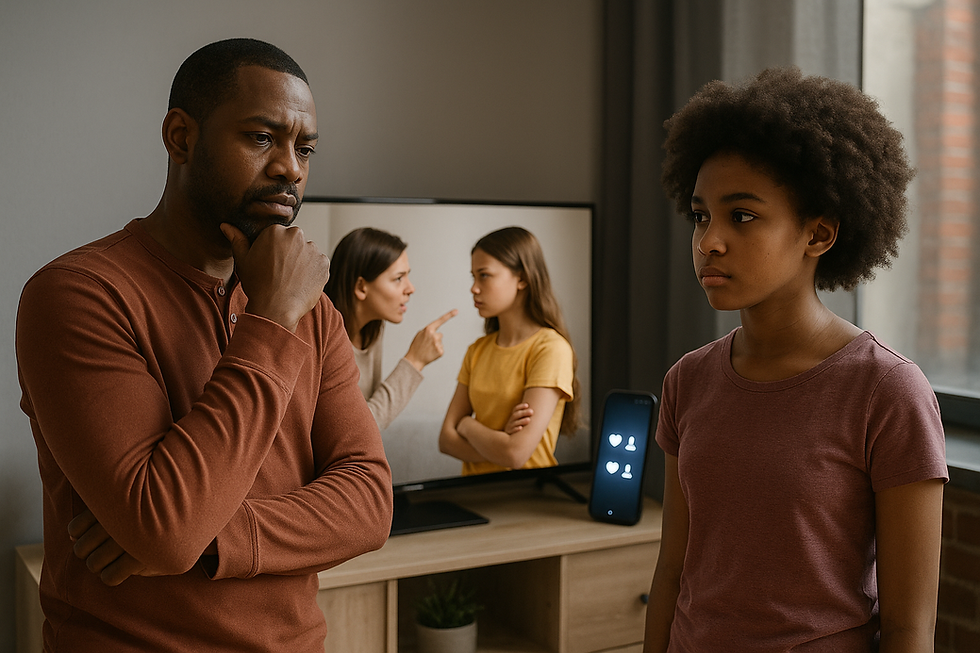Reflections in the Frame: When Life Starts Imitating Art
- Marcus D. Taylor, MBA

- May 27
- 2 min read

We often ask, “Does art imitate life, or does life imitate art?”But I’ve lived long enough to know—it’s both. And the most dangerous part? We often don’t notice when we’ve crossed the line from reality into role-play.
The Hood vs. Hollywood
Growing up in the hood—what some call the inner city—I experienced a reality far different from what was shown on television. In our world, children did not talk back to adults. That wasn’t just a suggestion—it was cultural law. The consequences were real, immediate, and non-negotiable.
But the art we saw—on television, in movies—painted a different world. Kids disrespected their parents with sarcasm and sass. What shocked us even more was that they got away with it.
So we tested it.
Some of us talked back. And what we discovered shaped our future.
Some parents stood firm. Others? All bark, no bite. And those who didn’t back up their warnings unintentionally reshaped their household rules—by accident, not by design. From there, the culture shifted.
What we saw on TV was no longer just entertainment. It became a training video for behavior.
Disrespect: From Taboo to Trend
Fast forward to the 2020s and the shift is glaring. We now live in a society where disrespect is no longer shocking—it’s expected. It’s stylized. It’s scripted into shows, social media trends, and influencer content.
Children don’t just question authority. Some reject it entirely. We’ve moved from “Yes ma’am” to “You can’t tell me what to do.”The slope has been slippery. The art reflected life, then life chased the art.
From Community Respect to Global Validation
Back in 1996, being “known” meant being respected locally. Maybe you were a great athlete, a class president, a straight-A student. Recognition came from proximity and effort.
Today? Relevance means reach.
Social media turned everyone into a brand. Even in my own home, I see it. My daughter will post pictures to her followers but not send a single one to family. The validation she seeks is external, not internal. And that’s the world our youth are being shaped by.
It’s no longer about who knows you—it’s about how many see you.
And I don’t say that as criticism—I say it as observation. Because it raises a bigger issue: Are we confusing value with visibility?
What Are We Imitating Now?
Art once pulled from the lives of people. Now people are pulling their behavior from the stories art tells. If we don’t stop to ask who’s writing the script, we’ll find ourselves starring in someone else’s story, never realizing we forgot to write our own.
Culture used to be something we carried. Now, it's something we consume.
And if we don’t start separating value from validation,we’ll keep raising generations that know how to pose,but forget how to stand for something.



Excellent and filled with the truth!